How to Scale Your B2B Startup (Step by Step Guide)


If you're reading this, it's likely that you are either the founder of a B2B startup, or you've been tasked with scaling one. Regardless, scaling a B2B startup requires a lot of testing, optimization, and hard work.
And although there’s no way to escape that, we’re going to do our best to make scaling your startup easier. So, we'll be outlining the different tactics a B2B startup can use to scale, and walk you through our favorite approach to scaling a B2B startup.
Let's dive into it!
Different ways to Acquire Customers
When it comes to B2B, there are a variety of different channels you can use to acquire customers. If you've been around B2B sales for a while, you'll know that one of these is A LOT better than others.
And when you start, you’re not going to have any customers or even website visitors. So it’s best to focus on the tactics that actively draw customers and leads in.
But let's run through them so you can get a better understanding of your options.
Here are the most common growth tactics for B2B startups:
- Outbound Sales
- Digital Ads
- Content Marketing
- Viral Features
Of all these features, outbound sales is by far the most effective. But let's make sure that's abundantly clear, so let's break down each one of these channels to clearly outline our thinking and why we recommend outbound sales to most B2B startups.
Outbound Sales
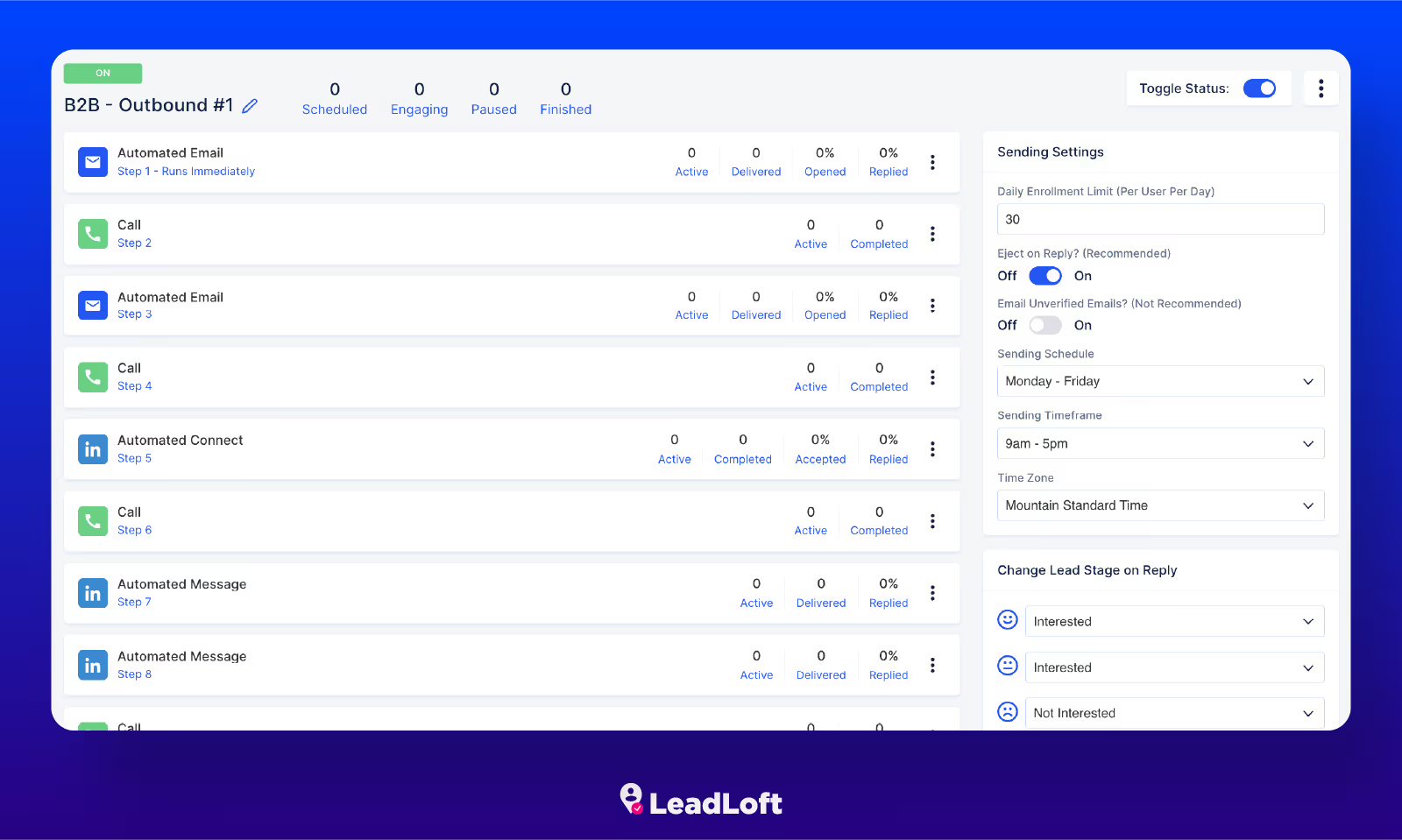
I assume you already know what outbound sales is. If you don't, it's the act of conducting outbound outreach to prospective customers using cold emails, cold calls, cold messages on LinkedIn, and other channels.
The reason you probably already know about it is because you’ve likely experienced someone using this approach with you.
There's a playbook that just works and if you can figure out this playbook, it is guaranteed to produce a reliable source of revenue for you and your team. FOr this reason, the vast majority of successful B2B startups use this approach.
Don't get me wrong, it is still very difficult to make outbound sales work, but that's the truth about startups. They are hard! But your chance of success is ten times higher if you focus on outbound sales compared to other options for generating customers.
Digital Ads
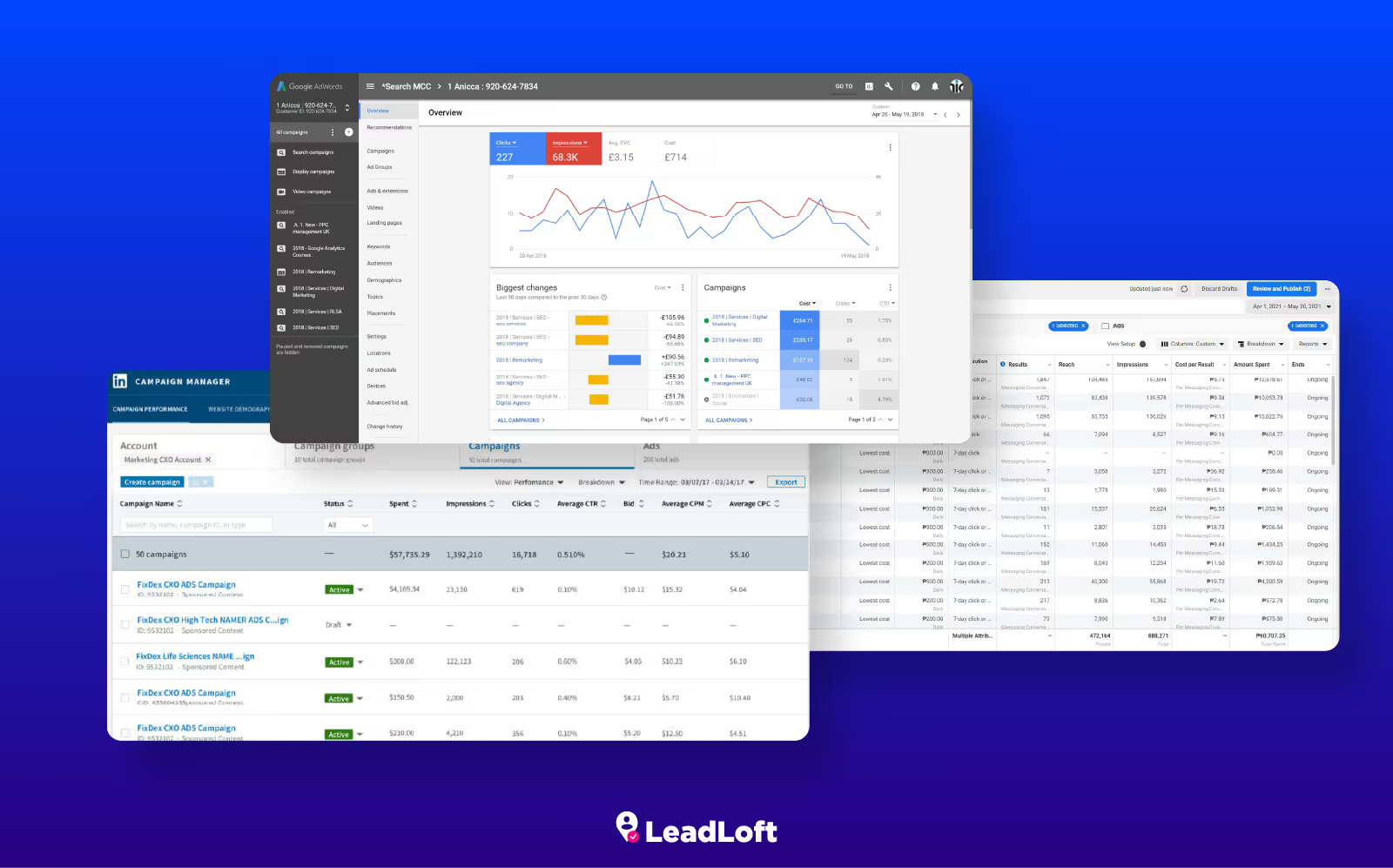
The digital ads is the next channel, which I'm sure you're also aware of. The difficulty with digital ads is that, well… they're really difficult to make profitable.
Most people you're bidding against are bidding on lifetime values. These are going to be sophisticated companies who have an almost perfect understanding of the value each lead brings to them. This means they might be bidding on a similar keyword as you, with the understanding that each customer is worth $30,000 over 10 years.
It's going to be difficult for you to outbid this company and in most cases, it will lead to you and your team burning truckloads of money just to get clicks.
So, should you use digital ads? Nope… well, at least don't start with them.
If you eventually figure out outbound sales, I recommend dabbling with digital ad retargeting, but always avoid relying on digital ads as a reliable source of growth when you start.
Content Marketing
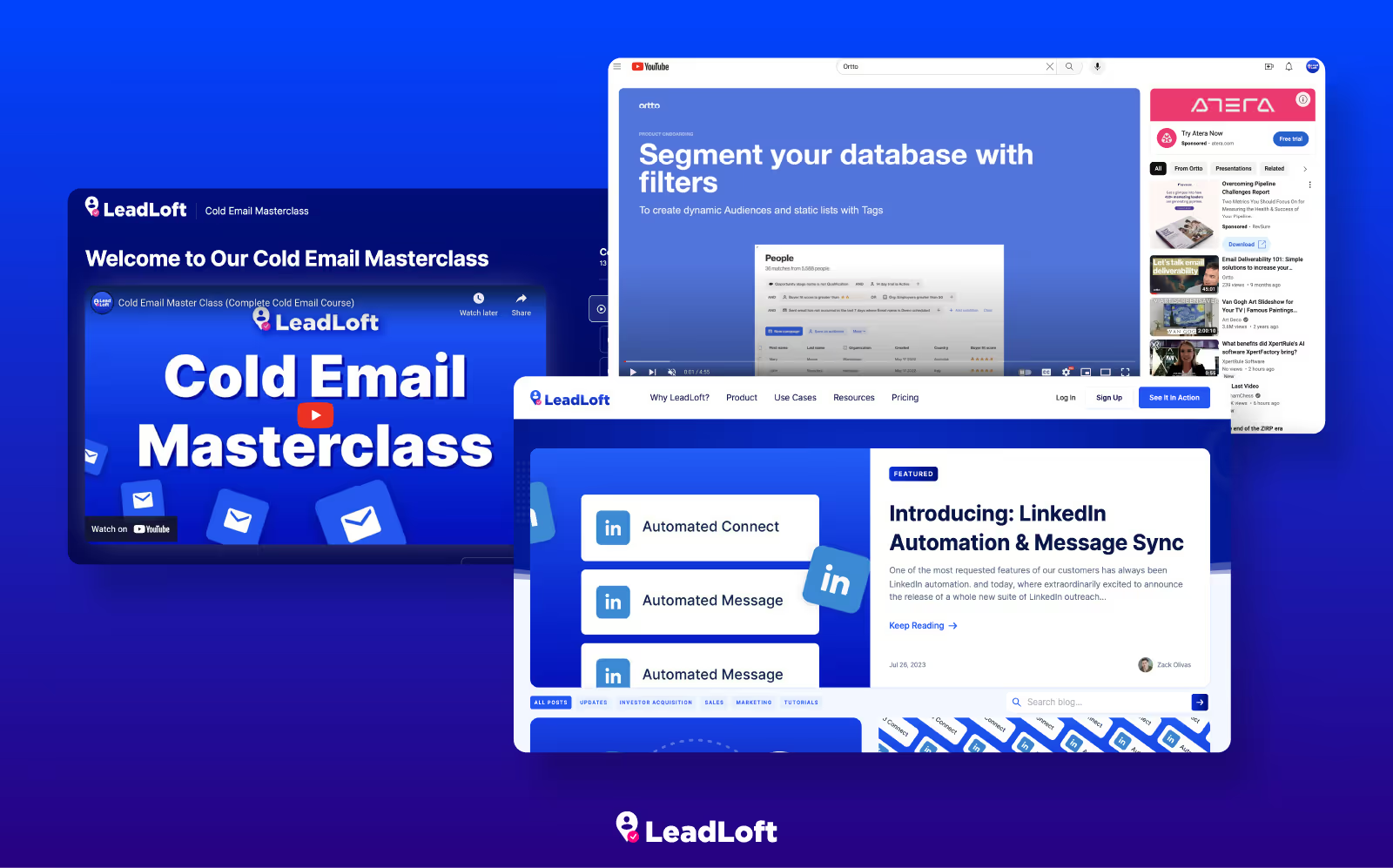
Content marketing is the next item on this list and it's an extremely effective strategy. So, what's the issue? Well, content marketing takes a lot of time. Like, a lot of time!
Not only does it take a lot of time, but it also requires a lot of skill to make it work. You can find thousands of websites with blogs that bring in literally no traffic every single month.
It’s just a time consuming process to build a blog that brings in a lot of traffic.
So, should you use content marketing? It's okay to write a few blogs to fill up your website or to provide some helpful content to customers but definitely don’t make it your main focus.
Viral Features
The next on this list is viral features. You’ve probably seen these in consumer software, but they're quite rare in B2B software applications. A few notable examples are Intercom and ServiceBell. This is because their tools are customer-facing and have their logo and branding publicly displayed saying “Powered by ____”.
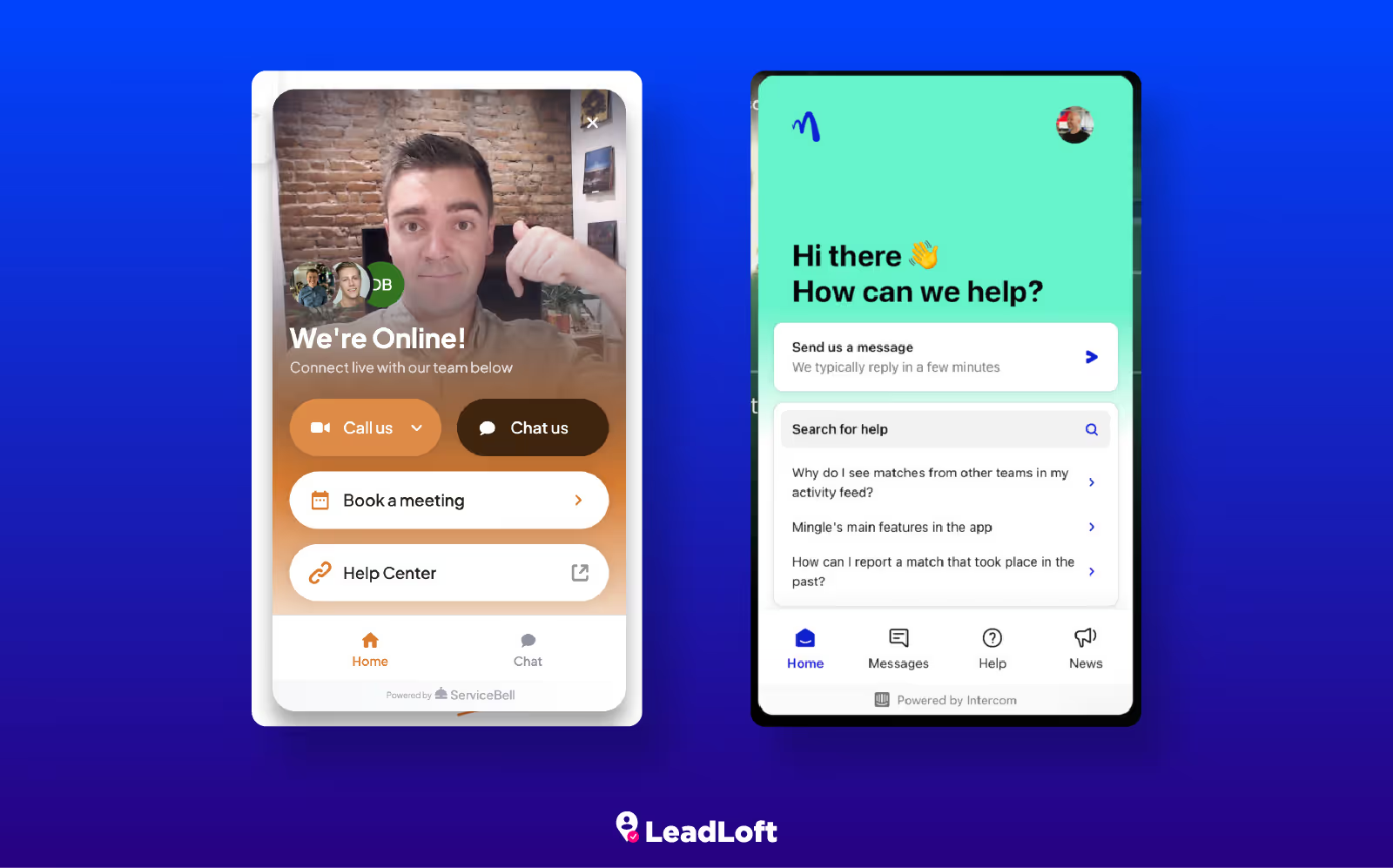
Unfortunately, it's rare that viral features exist in B2B solutions.
Even if you are one of the lucky ones who has virality built into your tool, you'll still benefit from running outbound sales since viral features are largely an idle lead generation solution. There's not much you can do to accelerate their effectiveness other than get more customers.
So, should you rely on viral features? No. You can certainly think about building them into your product, but they’re only as effective as the size of your customer base. So, focus on building that customer base first.
Now that we've established that outbound sales is your key to success, let's break down how outbound sales works and how you can run it to scale your startup.
Guide to Scaling Your B2B Startup
So when it comes to running outbound sales I recommend getting your sales process in order. So let's lay them out step by step.
- Your Pricing: How to price your product?
- Your Pitch: How are you positioning your offering?
- Your Ideal Customer (ICP): Who are you focused on closing?
- Your Contract: What is the customer signing?
- Your Payment Processor: How do you collect payment?
- Your Sales Software: How do you generate & close leads?
- Your Team: How do you scale a sales team?
How long should it take to set this up?
In most cases, you should be able to set all of this up in one week. If you're spending more than one week on getting this done, you better be in enterprise sales! Otherwise, roll up your sleeves and get your hands dirty.
Your company likely has little to no revenue, so drop everything and focus on this process. It is all that matters!
Now, let's walk you through each step. Starting from the top:
#1) Your Pricing: How to price your product?
Pricing is arguably one of the most important aspects of any B2B company. If you're charging $100 per month, it's going to be difficult to scale, much less support a large sales team. So if you're charging $100 per month, just keep in mind that you're probably not going to be able to run sales, which again, is the most reliable method for scaling a B2B company.
We're even guilty of making this mistake. We charged $100 for access to all of our features and it just wasn't enough to support a sales team. We've since released enterprise solutions which have made a massive impact on our sales process. Not to mention, it’s allowed us to reinvest in making our product 10x better.
So, if you're going to price your company correctly, do some calculations on what makes sense and what can support a sales team. Y Combinator actually has a great method for determining this by working back from a unicorn valuation.
It ensures your pricing can support a unicorn valuation given your market size. Not only will this help your company, but it will also keep investors interested in your company if you’re planning to go raise capital in the future.
So how does this work? Here’s the calculation:
Annual Price x Potential # of Customers = $100M
You can generate your ideal pricing by adding the potential # of customers, then solving for price.
The thinking being, if you can generate 100 million in annual revenue, you can achieve unicorn status because your company's value will be worth 10x your annual revenue. So 10 x $100M… you get it.
So the calculation is designed to ensure the market you're going after can support a unicorn given a certain price point. And in my experience, pricing your company so that it has the possibility of being a unicorn will lead to pricing your product correctly in most cases.

Here are some common variations:
$100 x 1M = $100M - Consumers
$1k x 100k = $100M - Small Businesses
$10k x 10k = $100M - Medium-Sized Businesses
$100k x 1k = $100M - Enterprises
Based on the variations above, which market looks most similar to yours? Since I know you're a B2B startup, it's probably the case that you're selling to small and mid-market companies. However, if you're selling to large enterprises (500+ employees), you're going to need to charge $100,000 per year or more per customer. So, just be sure when you're setting your pricing and designing your product, that it supports the market you are going after.
It's also good to keep in mind that this price in this formula is the average. Some of your customers might pay top dollar for enterprise features, while others might be on smaller plans.
#2) Your Pitch: How are you positioning your offering?
The next most important aspect is your pitch. I see tons of companies that just sell "our software" and put zero effort into making it look special or more powerful than it really is. A good example of this is Chili Piper. It's essentially a Calendly clone but they positioned the product to be a solution that "doubles conversions".

Whether or not that is true, I have no idea. Honestly, I assume it does very little to help the bottom line. However, if you're talking to a potential customer and you're trying to convince them to purchase your product, it's going to be a lot easier to convince a customer to purchase when you’re selling revenue compared to a product that helps schedule calls. So, be sure to spend time thinking about how you can position your product.
In our case, here at LeadLoft, we like to position our product by saving your company a lot of time and money while generating revenue. For example, we'll help manage your CRM and outbound process for you, which replaces an employee who would likely cost $80,000 per year or more. LeadLoft also streamlines the outbound sales process which is usually complex to set up. And after a lot of testing, we know that our customers are willing to pay for a solution that saves them money and helps them drive revenue. So that's how we position our offering.
It's also good to keep in mind that if you're struggling to close a deal, it's okay to throw in services to increase the likelihood that somebody might close. A good example is if you were considering using LeadLoft but were concerned about migrating. Our team might offer to handle the entire migration for you to lower that barrier of entry and make the buying experience more frictionless. This is especially true when you’re just getting started. An MVP can be tough to sell. So don’t be afraid to toss in some services to make it easier at the early stages.
#3) Your Ideal Customer (ICP): Who are you focused on closing?
Selling to a large swath of prospects is extremely difficult. Often, they have varying degrees of problems. This makes it difficult to refine your pitch and even more challenging to close deals consistently.
So focus on an extremely narrow audience that you know is struggling with a specific problem, you'll find that your close rates and meetings booked will all increase.

If you're looking for help identifying who your ICP is, check out our Initial Customer Profile Mapper resource. It will help you narrow down your ideal customer.
#4) Your Contract: What is the customer signing?
Assuming you've selected your price point correctly, your customers are going to want to sign some kind of document. In most cases, this can be a simple contract that outlines the terms of the agreement and the price. There's no need for you to overthink this; a simple agreement will do just fine.
If you need some help, you can use ChatGPT or check out YCs Sales Agreement templates.
Keep in mind that if you are selling to enterprise organizations, be aware that the contract requirements and bureaucracy will get far more complicated. But that's part of the deal when you're closing $100K+ deals.
#5) Your Payment Processor: How do you collect Payment?
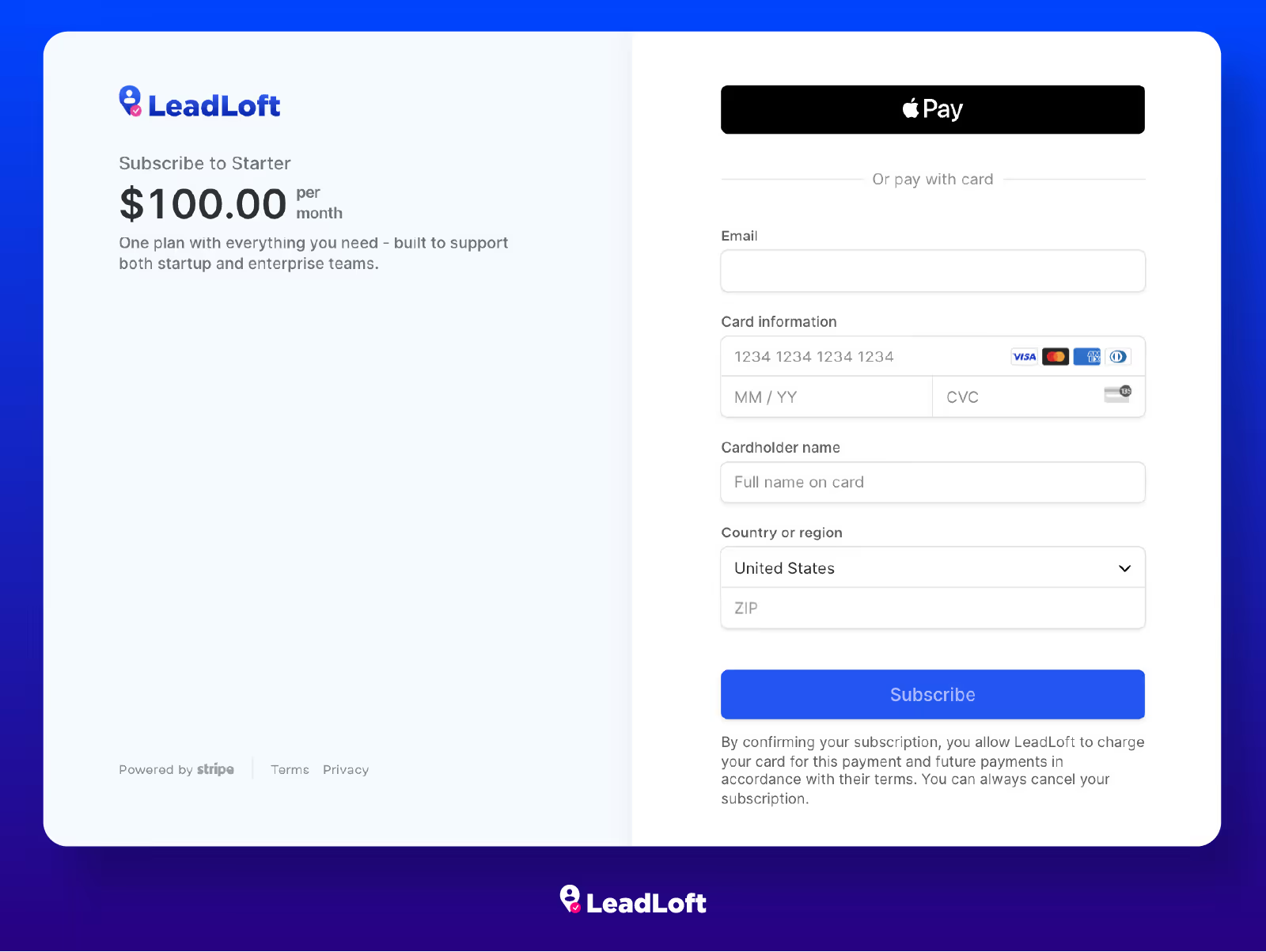
As soon as the customer signs, you're going to need a way to collect payment. You could ask him to sign into your application and submit payment but we found that can take time to set up.
If you want to move fast and keep things simple, I'd recommend using Stripe and following these steps to generate a payment link:
- Create a Product
- Create a Payment Link for that Product
- Add the Payment Link to a “Collect Payment” email template
- Use the template after they’ve signed with you.
This will keep things simple and provide a quick and easy way to start collecting payments.
#6) Your Sales Software: How do you generate & close leads?
The next aspect of all this is to figure out how to generate leads and close deals. We found that a lot of teams seem to struggle with this which is why we initially built LeadLoft.
Instead of having a variety of tools, you can use just one tool, LeadLoft, to generate leads, track your pipeline, and close deals.
How to Generate Leads
So how should you think about generating leads and closing deals?
Well, we’ve already covered the most important aspects of lead gen or sales engagement: positioning and ICP.
And we can’t stress this enough. You NEED to make sure that you have an extremely narrow ICP and that your product is positioned to solve a problem this ICP is having.
If you do both of these things, generating leads will be a heck of a lot easier.
Next you just need to to build a Playbook, which will automate emails, automate LinkedIn, schedule calls, and other channels. Here’s what a standard one might look like:

And this is the process you're probably going to spend the most time on because the skills that make lead gen work won't be acquired overnight:
- Learning about email deliverability
- A/B testing copy
- Converting cold calls into meetings
But if you can get comfortable with all three of these things, you'll have a scalable, repeatable, and effective growth process.
How to Close Deals
Once you figure out how to generate leads, the next step is learning how to close leads.
And although they might sound very similar, closing deals and generating leads are two completely different skill sets.
And if you have no experience with sales or closing deals, here's a quick overview of a process that will instantly make you better than most salespeople.
Effective sales strategy:
- Listen more than you talk
- Only cover features that solve their problem
- Keep the meeting/demo short
- Schedule the next meeting before ending the call
- Follow up with resources, a recap, and next steps
- Send the contract as soon as it feels reasonable
If you follow these steps on every meeting you book, you'll find that you'll have a reasonably high close rate.
Also, if you're wondering how to track all of this, you can track it using LeadLoft or any other sales CRM. We even have an in depth guide that teaches you how to set up your sales process.
#7) Your Team: How do you scale a sales team?
Setting up your sales software and generating leads is a difficult task in its own right. but once you figure that out, and your sales process is still working as you'd expect, you're going to need to start scaling your sales team and building a sales organization.
So how do sales teams scale?
Well, if you're a founder it's probably the case that you're the first salesperson. There are definitely examples where the founder doesn't necessarily sell themselves. Maybe they go out and recruit a friend or past colleague who can sell alongside them. But as a founder, you're going to need to be extremely involved at the beginning.
In my case, I built the initial lead generation process, sales pipeline, and went out and recruited past colleagues who were far more talented than me when it came to actually closing deals.
Although I don’t spend the majority of my time on sales calls, I've still been in hundreds of meetings and remain heavily involved in the sales process, especially when it comes to lead generation.
Not only is this extremely valuable for defining your sales process, but it will teach you about how sales works and will help to define your sales process when you eventually make your first hire.
So what does a sales organization look like when you first get started?
Here’s a graphic of the first sales person at your company:
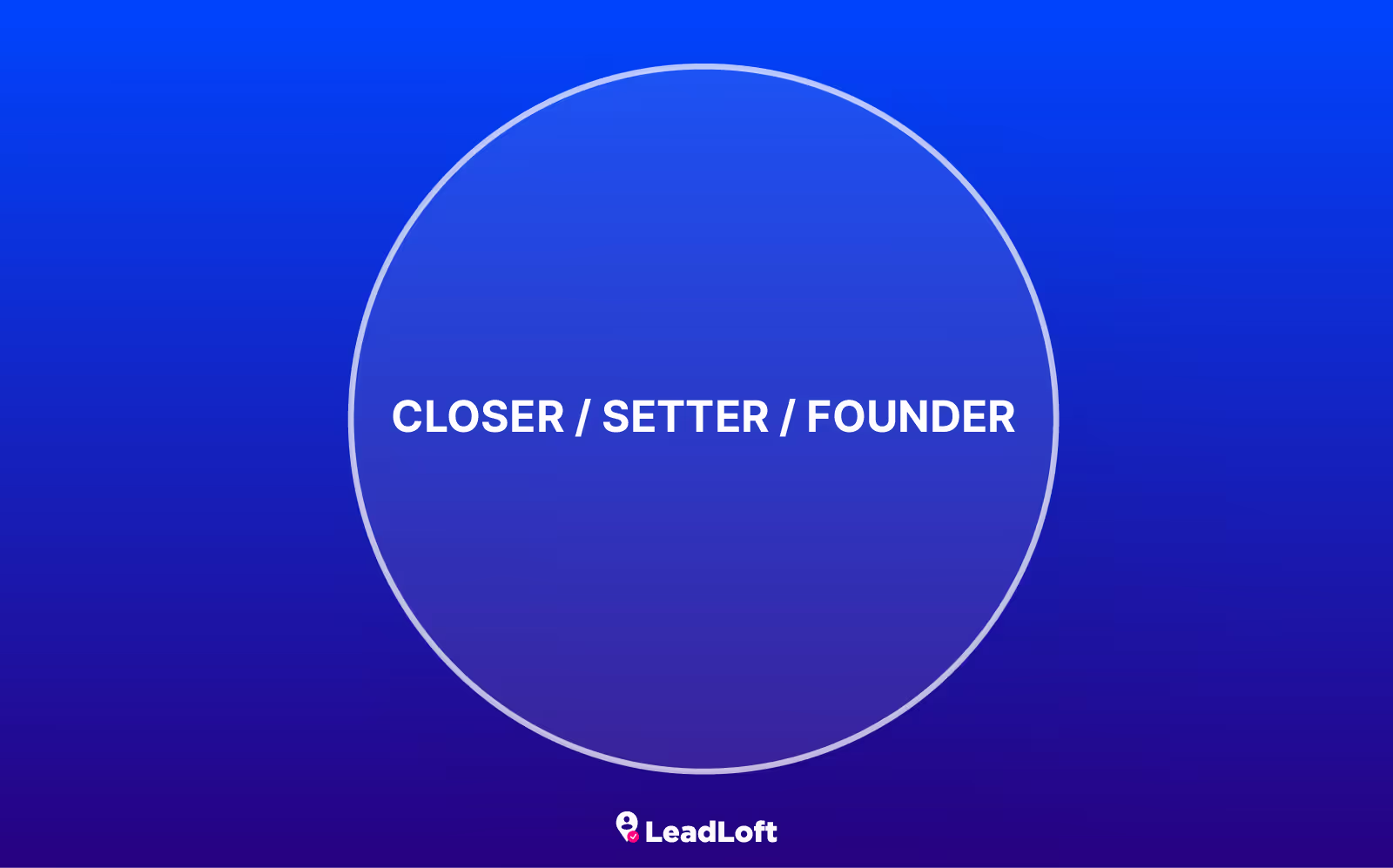
When you first get started, one person, who is likely the founder, will be tasked with generating leads, setting appointments, and closing deals. To put it simply, at the very beginning of your sales process, it's going to be a one-man show.
Of course, you can speed things up if you have the money to do so. So, if you're a VC-backed company or you're already profitable, you can go out and build your first sales pod, which is our favorite sales team structure and the next step in scaling a sales team.
A sales pod consists of one to two setters (Sales Development Reps) and one to two closers (Account Executives). You'll find that it will be easier to book meetings in some industries, so in those cases, you can actually have two closers for each setter. Regardless, mix and match your team's sales pods depending on how easy or difficult it is to set calendar appointments.
In most cases, you're going to need two setters for every closer. Here’s what the most common sales pod will look like:

Once you have a sales pod built out, you should run that process and try to refine and optimize it as much as possible. If it's working well and it's profitable, you should then calculate the cost and the revenue each sales pod brings in.
For example, if one closer costs $10k/month and each setter costs $5k/month, then you'll know the cost of each sales pod is roughly $20k/month. So, your goal in this case is to generate a minimum of 3x their annual cost. Let's do the math: ($20k/month x 12 months) x 3 = $720k in annual revenue.
If your sales pod is now optimized and they're successfully generating three times more than their annual cost, then it's time to begin scaling. And when you scale, you don't scale by a single salesperson. Instead, you'll scale by bringing on an entirely new pod altogether. If your current pod is generating 3x their annual cost, then you should expect this new pod to be generating similar results after 3 months of onboarding.
Depending on how the new pod performs, scale indefinitely. Eventually, you'll have multiple sales pods operating independently.

So that's how you scale a sales team. You need to understand the input or the cost of a pod, and determine the output or the revenue generated by each pod. As soon as this surpasses 3x the costs, start scaling your sales pods.
Having Realistic Expectations
The last aspect of all this I wanted to cover is your expectations. There are countless articles about scaling startups or generating leads out there, most promising instant results.
Unfortunately, that's not how scaling a startup works. It takes a significant amount of time to refine your process and figure out what works for your market and product. If it were easy, we would see millions of new unicorns every week. But we don't, because this process is hard.
So, it's crucial to remind yourself that scaling a startup is much like learning a new language. It's not going to be useful on day one, week one, or probably even month one. But, if you invest a lot of time in learning, testing, and optimizing your process, one day things will click, and you'll have a money-printing machine.
So, if you're a founder or a VP of sales reading this, remind yourself every day that this process takes time. But don't lose track of the fact that if you're able to make it work, you've unlocked a direct path to profitability. And that’s something 99% of startups will never figure out.
Wrapping Up
As always, it takes our team a lot of time to write these articles and generate graphics. So, if you found this helpful, please check out LeadLoft. We truly believe that it's 10x better than any other B2B or sales solution out there. It will save your team years when trying to refine an effective outbound sales process. Regardless, we're all about helping startups scale, so book a time with us. We'll walk you through our own internal sales process that you can duplicate and use yourself. There's no need to sign up if you don’t want to, we're really just here to help you.



